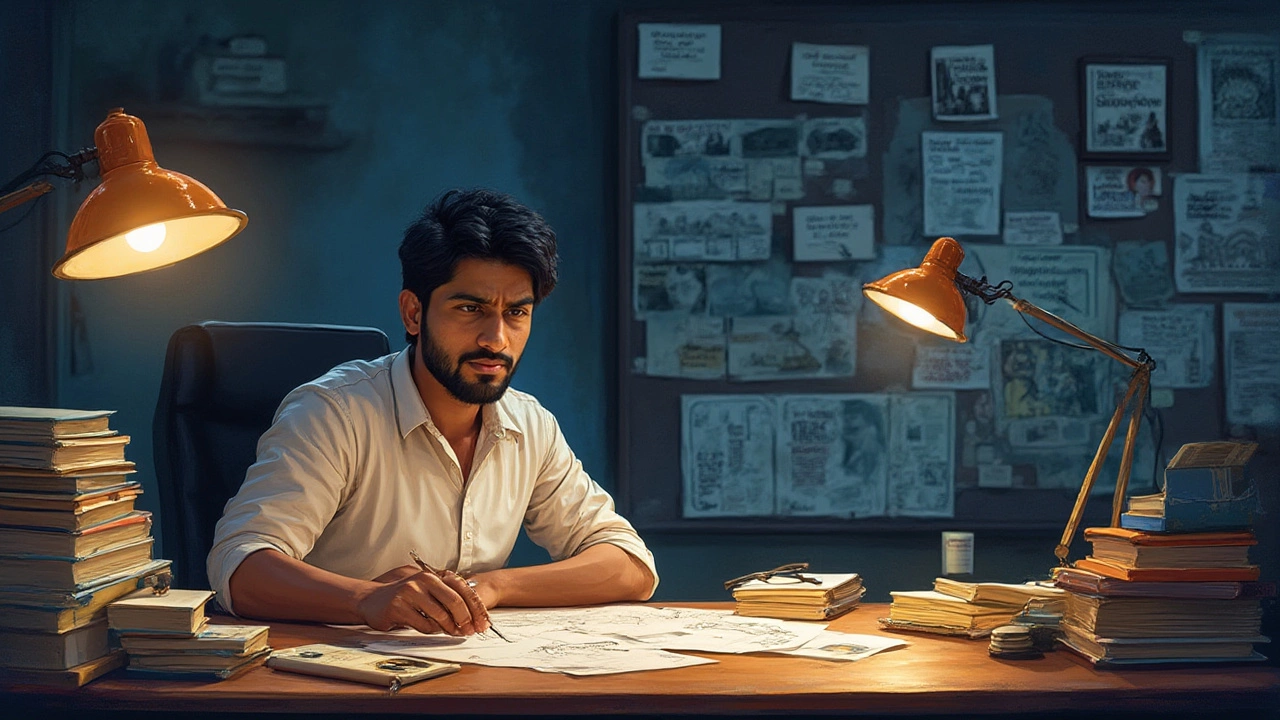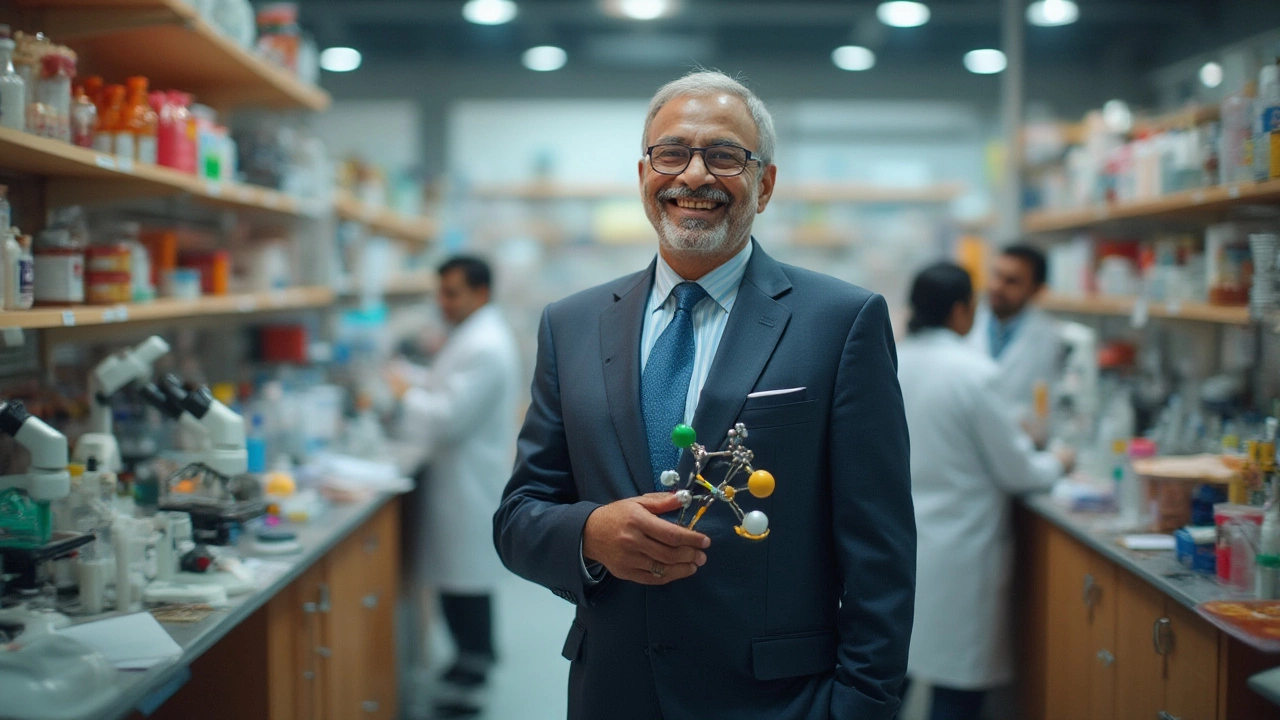India is famous for churning out billionaires from IT, real estate, and even tea businesses. But did you know the country’s richest pharmacist owns a fortune that easily puts most software tycoons to shame? This isn’t some mysterious figure working behind a pharmacy counter in Mumbai, but a self-made giant who turned his family’s pharmaceutical distribution business into a global leader. The man’s name: Dilip Shanghvi, the founder and managing director of Sun Pharmaceutical Industries Ltd.
Meet the Giant: Dilip Shanghvi and His Empire
Dilip Shanghvi grew up in a small town in Gujarat, far from the plush boardrooms where he sits today. His pharmacy journey started humbly. His father owned a tiny wholesale medicines shop. Most kids would run from the smell of chemicals, but Dilip was intrigued by the business side. After finishing his Bachelor of Commerce from the University of Calcutta, he took over the family operation — and that’s when things shifted gears.
Sun Pharma wasn’t born in a fancy lab. The startup story is quite unglamorous, actually. In 1983, with just Rs 10,000 in the bank (that’s less than $150 in today’s money), he started manufacturing psychiatric drugs. Back then, psychiatric medicine was considered risky business. Most companies avoided it because there weren’t many specialists or big profits. But here’s where Dilip’s story gets interesting—he didn’t follow the crowd. Instead, he saw a gap no one else did and filled it, building a solid revenue stream when others hesitated.
Fast forward to 2025: Sun Pharma is the fourth-largest specialty generics pharma company on the planet, and the biggest in India. It’s listed on the Bombay Stock Exchange and the NSE, and Dilip’s personal net worth touches $23 billion (₹1.9 lakh crore!). That’s higher than the GDP of some small countries. For a sense of scale, most big Bollywood stars and cricket legends don’t even graze one-tenth of his wealth.
Here are some jaw-dropping Sun Pharma facts:
- Over 40 manufacturing plants in more than 10 countries
- Sales in over 100 global markets
- Produces everything from antibiotics to oncology medicines
- Staff strength of over 36,000 people worldwide
What’s striking about Shanghvi is that he’s never been the flashy tycoon. Rare interviews, no show-off cars, and definitely not a party regular in Mumbai’s social scenes. He keeps his head down and works on his company. That’s rare in an age where entrepreneurs often crave attention more than profits.
| Year | Sun Pharma Revenue (in ₹ Crore) | Dilip Shanghvi Net Worth (US$ Billion) |
|---|---|---|
| 2010 | 5,528 | 8.5 |
| 2015 | 27,282 | 15 |
| 2020 | 32,837 | 13.7 |
| 2024 | 42,875 | 23 |
Secret Recipe: How Did He Become the Richest Pharmacist in India?
You can’t chalk Dilip’s rise to just one thing—he’s a shrewd strategist, a bold risk-taker, and he knows how to play the long game. Want to crack the code to his mega success? Here’s what sets him apart:
- Pick your niche before the crowd does: While everyone else was busy with antibiotics and painkillers, Dilip doubled down on psychiatry, cardiology, and niche therapies. Sun Pharma built a reputation in segments nobody cared for back then. It pays to be different, especially when it’s underserved.
- Spend where it matters: Unicorns burn money on marketing. Dilip spent big on R&D. Today, Sun Pharma has R&D centers in India, North America, Israel, and Japan. They file hundreds of patents each year and bring out dozens of specialty medicines much before rivals do.
- Go global, but play local: Sun expanded not just by exporting tablets, but by buying local champions in places like Israel (Taro Pharmaceuticals, a game-changer $454 million deal), the USA, and emerging markets. Dilip was never shy about taking on global Goliaths, but he always kept a sharp focus on Indian roots.
- Buy big, merge big: He’s a master of the strategic acquisition. When he bought Ranbaxy in 2014 for $4 billion, he made Sun India’s biggest drugmaker. It wasn’t all smooth sailing—the Ranbaxy buyout meant loads of regulatory headaches, but he stuck it out and eventually turned it around.
- Stay invisible, act fast: While other CEOs bask in media attention, Dilip prefers sorting out issues quietly. But when there’s trouble, he doesn’t hesitate to shuffle management or pivot strategies. After a few regulatory setbacks, he rebuilt Sun’s credibility by fixing quality and compliance, almost overnight.
What can future pharmacists or business owners learn here? Don’t be afraid to choose a path nobody else wants, but do your homework. Pour your energy (and money) into research, not empty branding. If you spot a struggling rival that fits your business, make the bold move.
India’s generic drug boom owes a lot to Sun’s aggressive strategies. Not only did they lead domestically, but they pushed Indian medicines into the big leagues—Europe, America, and beyond. It wasn’t about copying what others did, but about outsmarting and outlasting the competition.

Breaking Down the Money: Where Does a Pharmacist Earn Billions?
If you’re thinking every pharmacist makes as much as Dilip, think again. The average pharmacist at a retail store in India makes somewhere between ₹25,000-₹50,000 a month. Even the best pharmacy owners in bigger cities might earn a few lakhs each year. What separates Dilip is he built a pharmaceutical manufacturing and global exports empire—it wasn’t just dispensing pills, but creating them, branding them, and pushing them to international markets at scale.
Here’s how the wealth stacks up for top pharma players in India (2024):
| Name | Company | Net Worth (US$ Billion) |
|---|---|---|
| Dilip Shanghvi | Sun Pharma | 23 |
| Cyrus Poonawalla | Serum Institute | 22 |
| Pankaj Patel | Zydus Lifesciences | 7.5 |
| Ajay Piramal | Piramal Enterprises | 4.5 |
| Kiran Mazumdar-Shaw | Biocon | 3.3 |
Notice something? Most of these folks aren’t small-time pharmacists at dispensaries. They’re founders, CEOs, or children of pharma barons who built colossal manufacturing, innovation, and export networks—huge supply chains, huge brands, and new molecules. So, if you want to aim for the top, think big: It’s about building, not just selling pills at a counter.
One last thing people overlook: Regulation. All these companies spend insane amounts on complying with FDA, EMA, and other global authorities. Any slip—a contaminated batch, a bad approval—can knock hundreds of crores off the balance sheet overnight. Sun Pharma’s continued success actually comes not just from making medicines, but mastering the legal, quality, and compliance battles better than most international rivals can.
Pharmacists who get rich also know medicine isn’t just about health, it’s about enormous logistics, legal navigation, brand timing, and always hunting for new market gaps. Every prescription in the world could mean a business opportunity, if you’re patient.
Tactics for Aspiring Pharmacists: Lessons from India’s Richest
Dilip Shanghvi’s career serves as a playbook for anyone in pharmacy, biotech, or even broader entrepreneurship. Want to follow his footsteps (or at least walk halfway there)? Here are some battle-tested lessons picked up from Dilip’s journey and top industry pros:
- Don’t be scared of a small start: Most great companies didn’t kick off with huge investments—Rs 10,000, a tiny rented lab, or a borrowed office can be enough if your idea is right.
- Keep learning, always: Pharma changes faster than Bollywood scripts. New drugs, new patents, new regulations. Shanghvi still spends hours reading journals and meeting researchers.
- Bet on people: Even the biggest factories don’t run themselves. Invest early in talent, especially scientists and manufacturing pros who understand India and global markets. Dilip kept many of his earliest team members with him for decades—they’re now top executives in the company.
- Quality matters most: After huge compliance problems at Ranbaxy, Shanghvi’s Sun Pharma doubled down on testing, quality, and transparency. Their FDA-approval track record is among the best for Indian drugmakers today.
- Diversify smartly: It’s risky to depend on just one therapy area or one export market. Shanghvi’s Sun Pharma sells in over 100 countries, with medicines used in treatments from psychiatry to oncology.
- Stay humble, always adapt: When a U.S. FDA ban hit Sun’s Halol plant a few years ago, most would panic. Dilip just got to work, fixed issues, and used the time to expand elsewhere. Stay hungry, and don’t sulk over setbacks.
Here’s a practical tip if you’re starting out: Get licensed, keep records crisp, and network like your life depends on it. The pharma market is cutthroat, and sourcing the right suppliers or winning over that reliable doctor can open doors that never close. If you’re aiming bigger, consider manufacturing private-label generics, or open your own franchise network by following what Sun did—innovate, acquire, and scale, rather than just survive.
Interesting stat: More than 65% of American generic drug prescriptions are filled by Indian companies. That’s the kind of market you want to break into if you’re ambitious–and that’s exactly what Dilip did decades ago, long before it was trendy.
So don’t get starstruck by Dilip’s net worth. Instead, learn from the way he solves problems, innovates, and pivots boldly. If you plan to build wealth in pharmacy, it’s less about dispensing one prescription at a time and more about spotting gaps in the market that others missed, then moving fast and hard when the right opportunity pops up. The road is wild, but hey, there’s never a dull day in Indian pharma.

